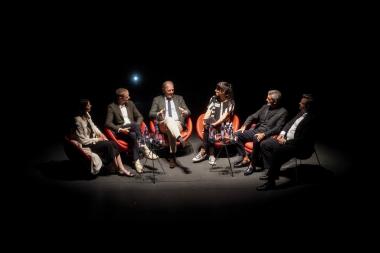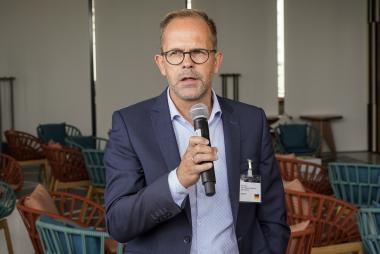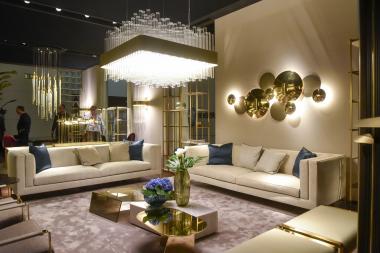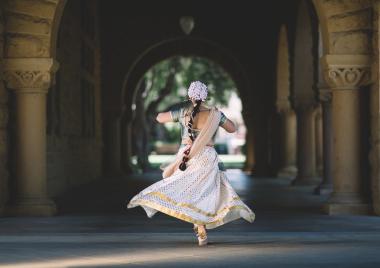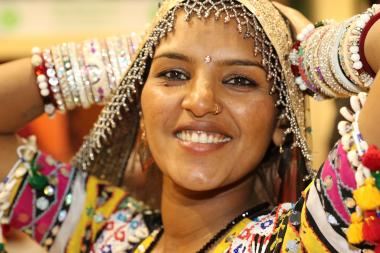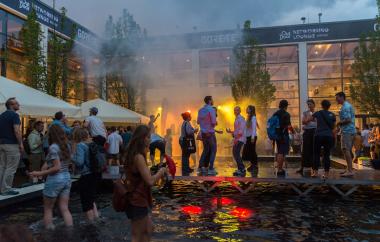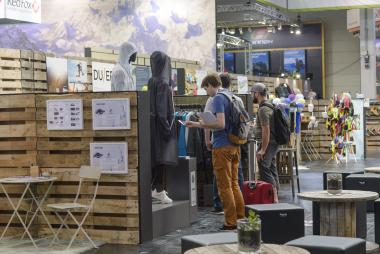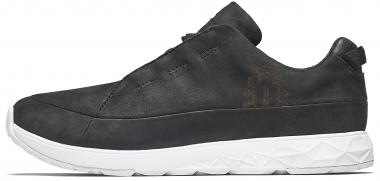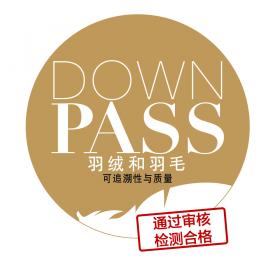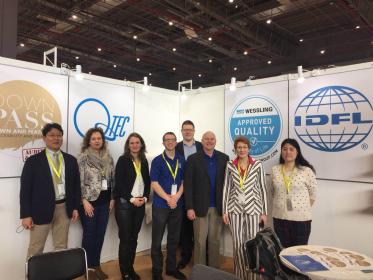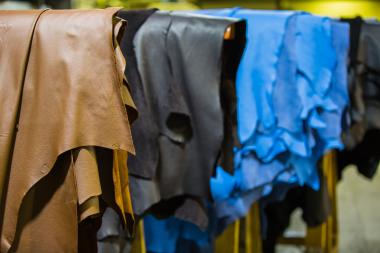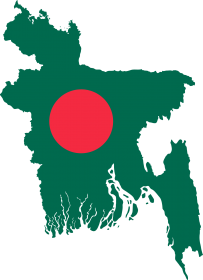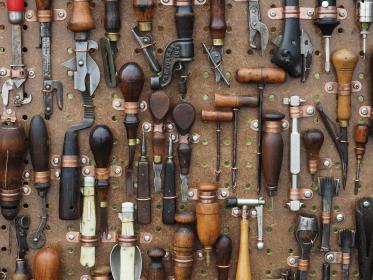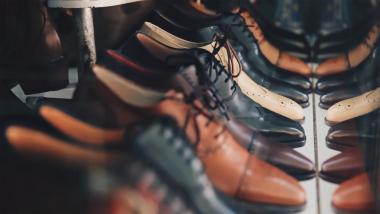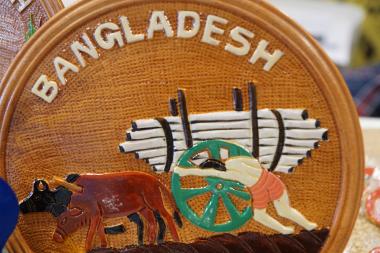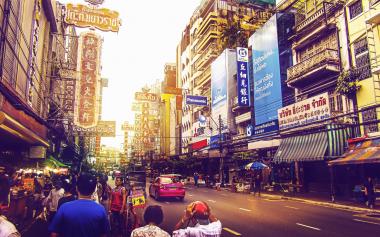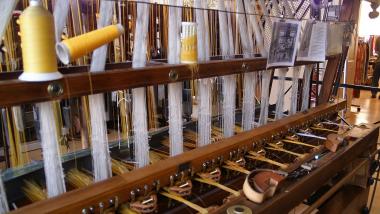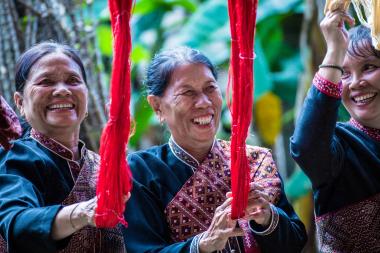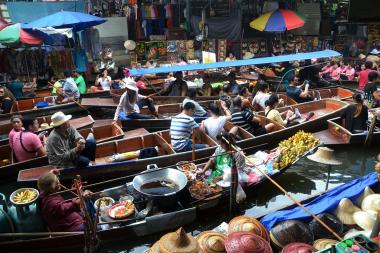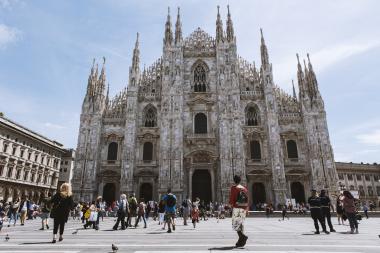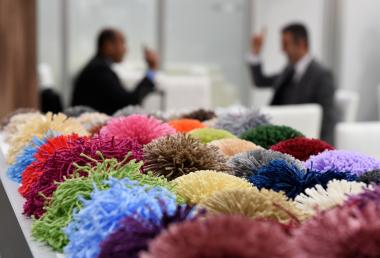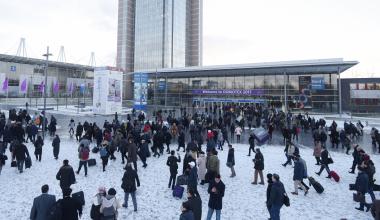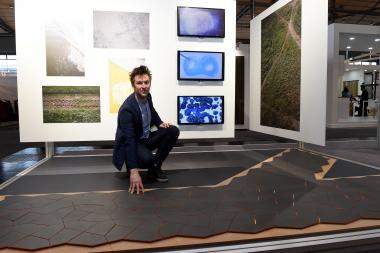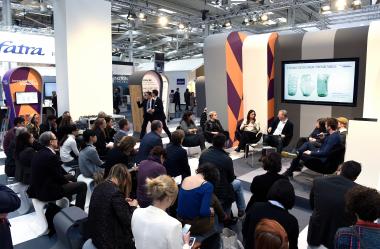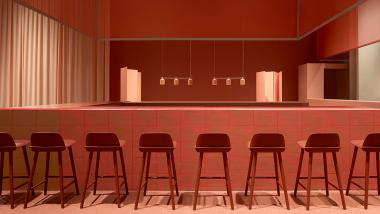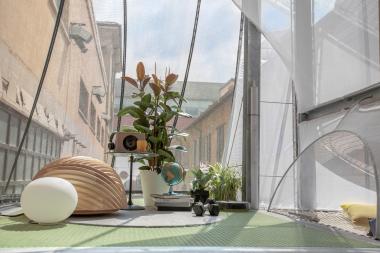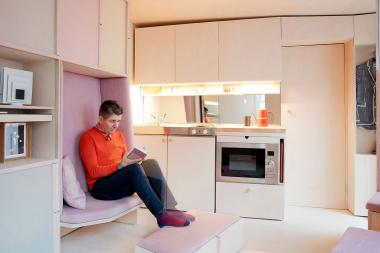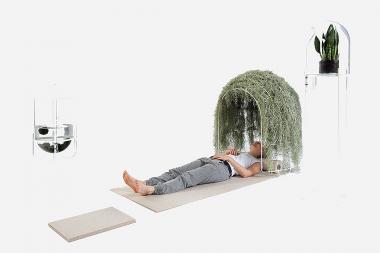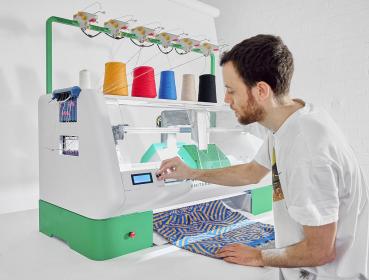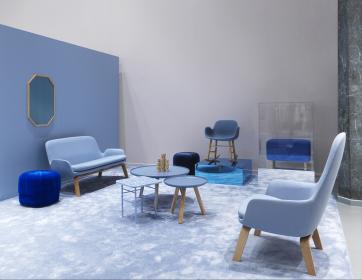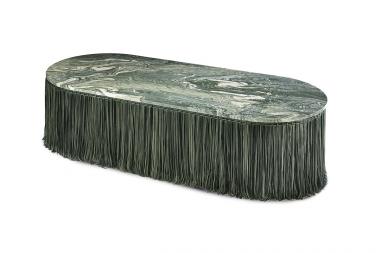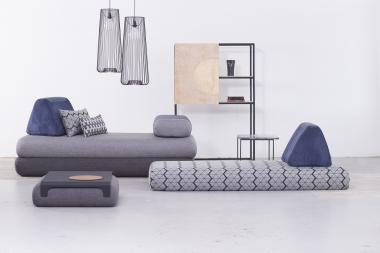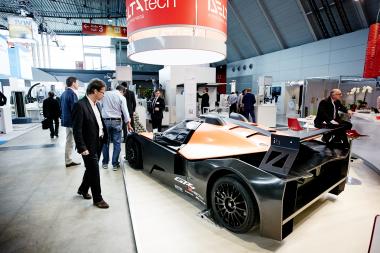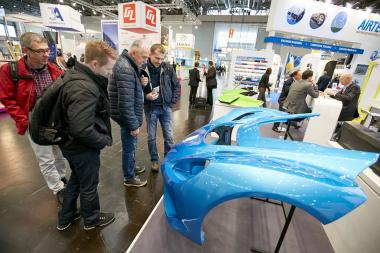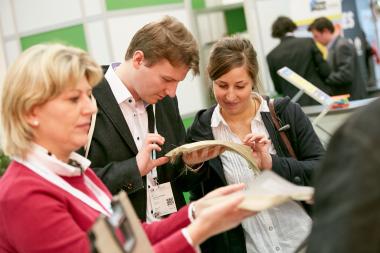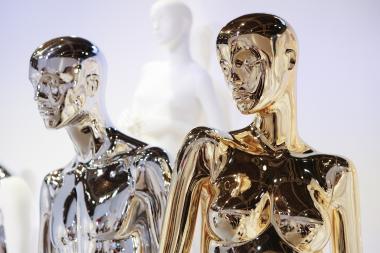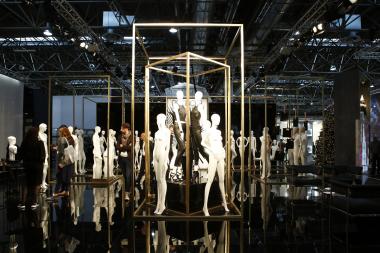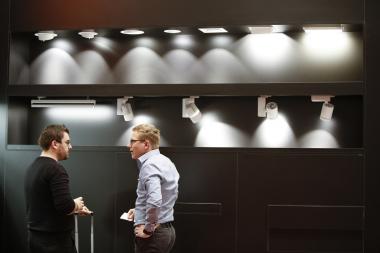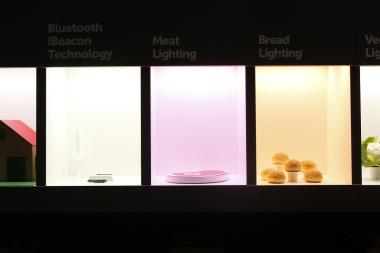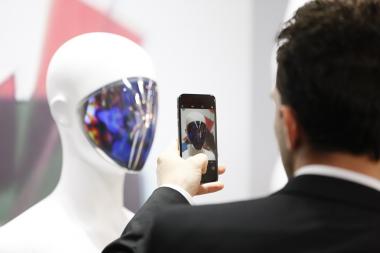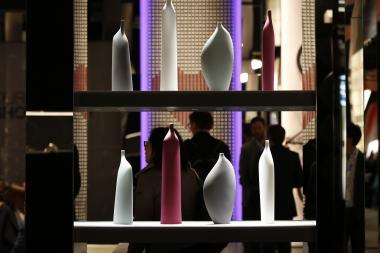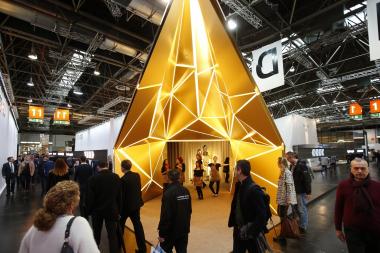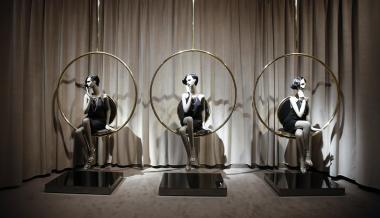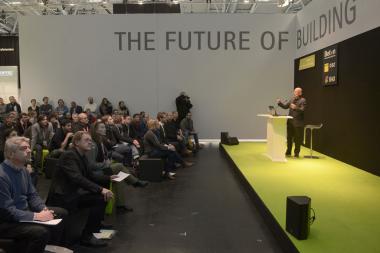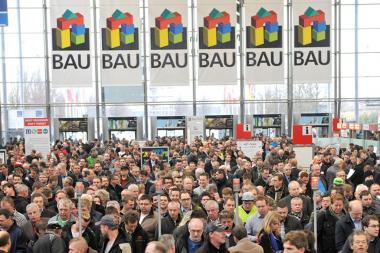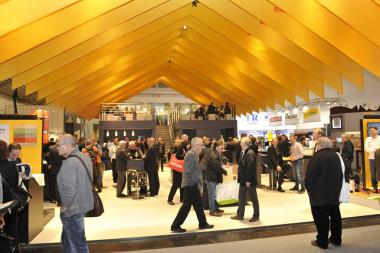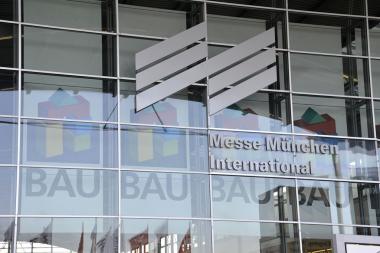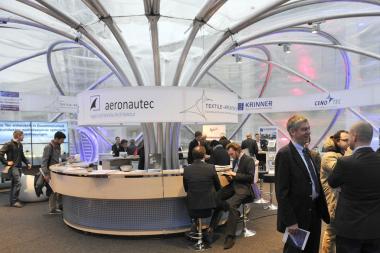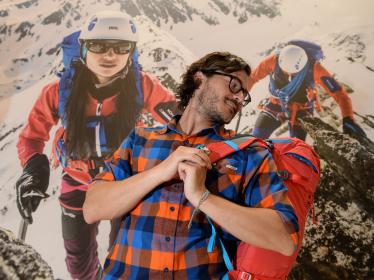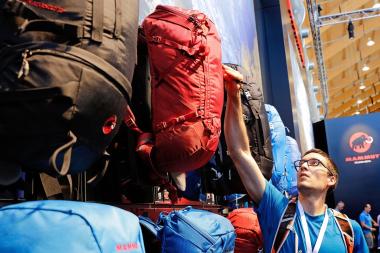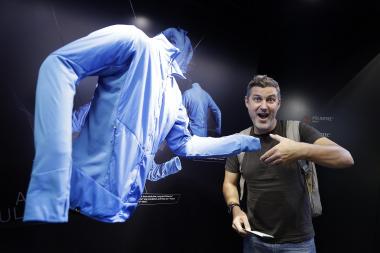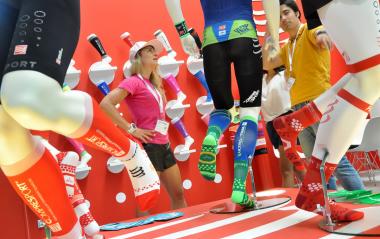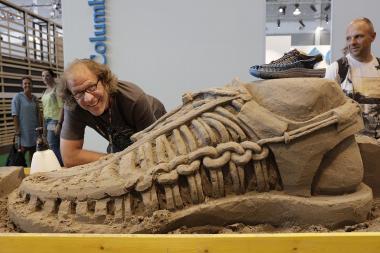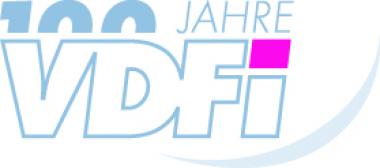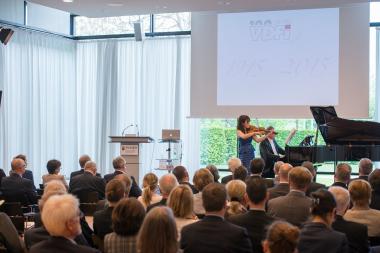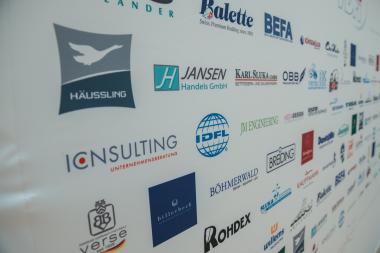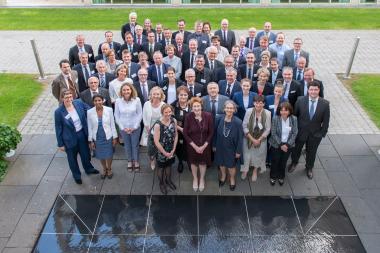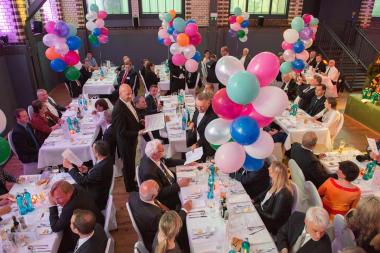FURNITURE INDUSTRY GREW ONLY MARGINALLY BY 1% IN THE FIRST HALF-YEAR
- Almost 1 in 3 pieces of furniture is exported
- 14% of furniture sales now online
At the European press conference in September 2018 in Madrid for imm co-logne/LivingKitchen 2019, Jan Kurth, Chief Executive of the Association of the German Furniture Industry (VDM), reported on the state of business in the sector:
At the end of an exceptionally hot summer, which has driven consumers to outdoor pools and beer gardens rather than furniture showrooms, the German furniture industry looks back on correspondingly subdued growth in the sector. Following a decline in sales in the second half of 2017, the business climate for manufacturers did improve slightly in the first half of 2018, but the bottom line is that furniture sales have stalled, especially within Germany. While the year began distinctly positively on the back of imm cologne, a significant slowdown in business subsequently set in.
From January to June, sales in the sector reached approximately Euro 9.1 billion, just 1 per cent higher than in the same period of the previous year. Following a 0.7 per cent fall in sales for 2017 as a whole, marked in particular by a negative trend in the second half-year (–1.6%), German furniture manufacturers were thus able to generate slight sales growth, but the situation remains disappointing.
Growth stimulus comes from abroad
This marginal increase in sales was exclusively attributable to international business, since sales outside Germany grew in the first six months by 2.7 per cent in comparison with the same period of the previous year. Domestic sales, on the other hand, stagnated with a minimal rise of 0.3 per cent. Export business benefitted from revived demand in key European sales markets and, increasingly, from the positive economic development in the major growth regions outside the EU. Almost one third of German furniture exports are now sold to non-EU countries.
Results of the latest VDM survey
In summer 2018, the VDM conducted a survey of the economic situation faced by companies in the sector. Participants rated the current business climate as satisfactory (34%) to poor (40%), with only 26 per cent judging it to be good. Compared with summer 2017, the situation for business had worsened in the view of 51 per cent of those surveyed.
State of export business better than domestic market
The disparity between the domestic market and export business is also reflected in the business survey. While most respondents (57%) judged the situation for domestic business as poor, an overwhelming number of manufacturers considered the situation for export business to be good (29%) to satisfactory (56%).
The current difficulties in domestic demand are largely confirmed by the furniture retail sector. Naturally, the long period of high temperatures moved many activities outdoors, but still this explanation falls short. To discover a little more about this, the VDM commissioned a representative study from the prestigious market research institute Kantar TNS, which put the furniture buying behaviour of Germans under the microscope. We were particularly interested to learn where people seek information about furniture and where they buy it. Do they look at advertising supplements in daily newspapers or rather retailers’ websites? Are people increasingly buying furniture online, or is the official sales channel statistic correct, which has been citing an almost stable figure of between 7 and 8 per cent for several years?
Customers increasingly seek information online
First, a look at the information sources. Overall, the furniture store itself – that is to say, looking at furniture in person – remains the most important source of information (68%), followed by brochures from furniture showrooms (54%). But 48 per cent of all those surveyed now use the Internet as a source of information and inspiration. In the younger target groups (<40 years old), the significance of the information source sees a clear shift, with the Internet dominating (77%) but furniture stores still being used by 63 per cent.
When it comes to formal educational attainment, there is a clear correlation with the information sources used. Those with a lower level of education favour brochures and advertising from furniture stores. The higher the level of education, the more buyers actively seek information online.
80% have bought large furniture items in the past 5 years
Online shopping or a trip to the shops? Generally speaking, over 80 per cent of Germans have bought relatively large items of furniture in the past five years. As can be expected, this proportion tails off with increasing age. Of those who bought furniture, 75 per cent carried out this latest transaction in a furniture store. Just under 10 per cent of shoppers bought from a purely online retailer and only 4 per cent purchased via the website of a furniture retailer. This gives a 14 per cent share of sales now taking place online and thus double the figure given out by the official sales channel statistics. In terms of online shoppers, people living alone and the under-30s lead by a clear margin. As young people get older, they are unlikely to move away from online shopping for furniture, and new “Internet savvy” consumers enter the market, the “normality threshold” for the remaining age groups is also expected to fall. There is therefore clearly still a great deal of potential for online furniture sales, and the industry and trade would be well advised to exploit this potential through engaging concepts and information suited to the target groups, moving away from discount and clearance promotions.
Additional online potential
We also see the growth of online business as offering opportunities for the furniture sector as a whole. Firstly, the fixation on prices and discounts is not as pronounced online as in highly concentrated bricks-and-mortar retail. Secondly, the short delivery times and short-notice availability typical of online trading tend to be served more flexibly from internal German sources than from Asia.
Official assessment: sales in the individual segments
According to official statistics, the individual segments in the German furniture industry developed unevenly between January and June 2018. Kitchen furniture manufacturers recorded sales growth of 4 per cent to around Euro 2.5 billion. The office furniture industry reported a distinctly positive result with sales of around Euro 1.1 billion (+7.9%). Manufacturers of shop and contract furniture saw a year-on-year increase of 7.2 per cent and generated sales of around Euro 920 million.
Manufacturers of upholstered furniture registered a noticeable decline, with sales falling by 5.3 per cent to around Euro 480 million from January to June 2018. With a drop of 1.6 per cent to Euro 3.7 billion, the sales performance in household furniture, other furniture and furniture parts was also more negative than the industry average. The smallest segment in the industry – mattresses – recorded the most significant decline in sales of 12.8 per cent to Euro 400 million. This must, however, be put in the context of the above-average growth in sales in this segment in recent years.
Furniture industry generates new jobs
We now take a look at the employment figures for the industry. The 482 businesses currently operating with more than 50 staff (–2.2%) employ 84,300 men and women, which is slightly above (+0.7%) the previous year’s level. Approximately 600 new jobs have been created in the industry in the last year, despite the difficult market conditions.
Compared with the same period of the previous year, German furniture exports in the first half of 2018 grew by 2.2 per cent to Euro 5.5 billion. With an increase of 1.2 per cent, sales to EU countries only crept slightly above the previous year’s level, thus developing much more sluggishly than exports as a whole. Having said this, exports to the German furniture industry’s largest external market, France, achieved growth of 3.5 per cent, and the Dutch (+6.2%), Polish (+10%) and Spanish (+6.1%) markets also saw positive developments from the perspective of the German furniture industry. However, furniture exports to the important sales markets of Austria (–1.3%) and Switzerland (–3.8%) declined.
Negative trend in Great Britain
The furniture industry also clearly felt the negative effects of the Brexit negotiations and the fall in the pound over the course of the previous year, with furniture exports to Great Britain contracting by 8.9 per cent in the first half of 2018. No other major export market performed as badly as the United Kingdom from the perspective of German furniture manufacturers.
Boom in exports to the USA, China and Russia
The key growth markets for German furniture now lie outside the EU. The outstanding performance of German furniture manufacturers in the largest growth markets of the USA (+9.5%), China (+25.9%) and Russia (+14%) is particularly noteworthy. Given the size of each of these markets and the strong demand for high-quality furniture, these figures are sure to see further growth. Other markets outside Europe, such as Canada, Mexico, Japan, South Korea and Singapore, are currently developing well, although exports to these countries are still at a relatively low level. Overall, the non-EU market is expected to become an important driver for growth for the German furniture industry in the years ahead.
Export ratio up by 32.6%
The industry’s export ratio – that is to say, the proportion of goods shipped directly abroad by domestic furniture manufacturers against total sales by the industry – climbed to 32.6 per cent in the first half of 2018, thereby achieving a new record. The corresponding figure for the first half of 2017 reached 32.1 per cent. This means that the furniture industry’s export ratio has doubled since the turn of the millennium.
Furniture “made in Germany” highly regarded
The success of German furniture manufacturers abroad can be put down to the quality, reliability of supply, design and individuality of our products. German manufacturers often have a better grip on processes and logistics than their international competitors. These are important selling points for consumers – whether they be in Shanghai, St Petersburg or San Francisco.
Greater support for exporters
In view of the increasing importance of exports for the industry, the VDM will be expanding the support it offers exporting companies. A new VDM Export working group aims to encourage dialogue between individual manufacturers, identify the main markets and coordinate export and trade fair activities for the industry as a whole. Information days and workshops for furniture manufacturers will be organised to share industry-specific expertise relating to the individual export markets. Practical tools will also be made available to support the successful involvement of German furniture manufacturers abroad. These additional export activities are intended to help German furniture manufacturers to grow their market share on the world market.
Slight increase in imports
Import competition remains strong: after German furniture imports achieved growth of 0.8 per cent to Euro 12.7 billion for 2017 as a whole, in the first half of 2018 they rose by a further 0.6 per cent to Euro 6.6 billion. However, the trade deficit reduced by 8.1 per cent to around Euro 1.2 billion in the same period as a result of substantially increased exports. Overall, furniture imports to Germany from eastern Europe are increasingly gaining ground from their Asian competitors. Poland enjoyed growth of 7.4 per cent and, as has been the case for a number of years, remained by far the largest source country in terms of furniture volume. Nowadays, more than one in four pieces of furniture (26.3%) imported into Germany originates from our neighbour to the east. The Czech Republic remains the third-largest source of imports with a slight rise of 0.7 per cent. Altogether, imports from EU countries achieved a significant increase of 1.8 per cent. By contrast, imports from Asia fell disproportionately (–5.9%), especially from Vietnam (–12.3%), Taiwan (–13.9%) and Indonesia (–9.8%). Imports from the second-largest originating country, China, declined significantly with a drop of 5.2 per cent. The structure of German furniture imports is highly concentrated, with around 56 per cent of all German furniture imports now attributable solely to the three largest supplier countries: Poland, China and the Czech Republic.
56% of all imports from Poland, China and the Czech Republic
Almost two thirds of participants in the VDM survey expect the business outlook to remain the same in the six months ahead. 24 per cent anticipate an improvement in the situation and just 12 per cent a worsening. According to the assessment of the respondents, the major factors affecting the trading climate in the next six months will be increasing prices of raw materials (33% of respondents), a shortage of skilled personnel (27%), growing pressure from imports (18%) and increasingly protectionist trade policies (9%).
Rising material costs hit the industry hard
The rising cost of materials as regards solid wood are seen as a particular obstacle for development in the sector. Companies in the German furniture industry taking part in the survey report an average increase of 9 per cent in the cost of solid wood when compared with summer 2017. Prices of wood-based materials increased by 5 per cent in the same period, with logistics costs also up by 5 per cent and staffing costs by 3 per cent. Given the market power of purchasing associations, it is not possible to pass on this rise in costs in full to the German furniture retail trade.
Forecast for the current year: +1%
While the contribution of foreign markets to German furniture industry sales is expected to remain positive in the second half-year, in view of the very significant growth in recent times, there are clouds on the horizon as far as domestic trade is concerned. Consumer confidence in Germany is also on the wane. Economic forecasts for this year have recently been revised downwards by leading economists. On this basis, we continue to anticipate sales growth at the end of the year by around 1 per cent in 2018.
Jan Kurth, Chief Executive of the Association of the German Furniture Industry (VDM), at the European press conference on 6 September 2018 in Madrid for imm cologne/LivingKitchen 2019


